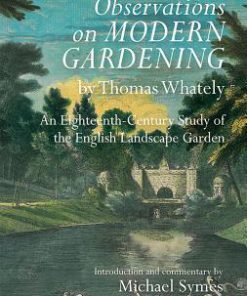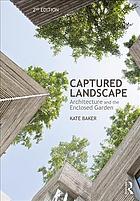Mirei Shigemori Rebel in the Garden Modern Japanese Landscape Architecture 2nd Edition Christian Tschumi 3035621764 9783035621761
$50.00 Original price was: $50.00.$25.00Current price is: $25.00.
This completed downloadable of Mirei Shigemori Rebel in the Garden Modern Japanese Landscape Architecture 2nd Edition Christian Tschumi

Instant downloaded Mirei Shigemori Rebel in the Garden Modern Japanese Landscape Architecture 2nd Edition Christian Tschumi pdf docx epub after payment.
Product details:
- ISBN 10: 3035621764
- ISBN 13: 9783035621761
- Author: Christian Tschumi
Mirei Shigemori had a major impact on the development of Japanese landscape architecture in the twentieth century. Active from the 1920s, he founded the Kyoto Garden Society in 1932. In 1939 he designed his own first masterpiece, the garden at the main hall of the Tôfuku-ji temple. From then on he designed 240 gardens all over Japan until his death in 1975; amongst the most famous are the Tenrai-an tea garden (1969) and the Matsuo Taisha garden (1975). The main characteristic of his gardens is that they respect tradition and, at the same time, depart from conventional paradigms by opening up to the influence of Western modernism with its own language. The first part of the book covers Shigemori’s life and factors that influenced his work. The second part contains a detailed illustration of 17 gardens. The book is published as a new and revised edition.
Table of contents:
Growing up in the countryside of Okayama. His first Garden
A broad education
The National Art Academy in Tokyo
Studying Art History, Aesthetics and philosophy
The “University of Culture” Project
SOME MAJOR CHANGES
Return to His Hometown
Changing His Name
Moving to Kyoto
THE SCHOLAR AND WRITER
The Big Survey of All Gardens in Japan
IKEBANA – A LIFELONG PASSION
The New Ikebana Declaration
CHADÔ – THE WAY OF TEA
Tea as a Way of Life
CALLIGRAPHY
RELIGION
The Yoshikawa Hachimangû Tôban Matsuri
Shinto and the Origins of the Japanese Garden
THE MATURE YEARS
Five Children with Foreign Names
The Kyoto Garden Association
Starting His Own Company
A Residence for Life
After the War
Isamu Noguchi and the UNESCO Garden in Paris
Busy Building Gardens, then Resuming Writing
Toward the End: A Second Survey
STRATEGY FOR RENEWAL
ROOTED IN PLACE AND CULTURE
Three Approaches to Designing a Garden
TRADITIONAL AND NEW DESIGN ELEMENTS
Traditional Design Elements
New Design Elements
THE LINES AND COLORS OF NATURE
GARDENS
THE BEGINNING
Kasuga Taisha
POINTS OF STONE
An Early Masterpiece: Tôfuku-ji Hôjô
Close to the Gods: Matsuo Taisha
LINES IN CONCRETE
Unusual Lines in a Castle Garden: Kishiwada-jô
The Wave Appears: Maegaki Residence
Clouds Mirrored in the Ocean: Kôzen-ji
Waves Washing Ashore: Sumiyoshi Jinja
PLANES OF GRAVEL AND SAND
The Chanting Dragon’s Hermitage: Ryôgin-an
Gods Protecting the Cardinal Points: Sekizô-ji
A Kimono inspires a Garden: Yûrin no Niwa
MOUNDS AND MOUNTAINS
Pushing the Limits of the Tea Garden: Tenrai-an
Tide and islands: Ashida Residence
Toyotomi Hideyoshi’s Emblem as Tsukiyama: Hôkoku Jinja
Shinto and Buddhism Meet on Mount Koya: Fukuchi-in
TRADITIONAL, BUT NEW
A Garden as a Present: Zuihô-in
A Shoin and a Tea House for a Garden: Kogawa Residence
The Setonaikai Among Mountains: Kitano Bijutsukan
APPENDIX
Glossary
Timeline of Mirei Shigemori’s Life
People also search:
mirei shigemori modernizing the japanese garden
shigemori mirei garden museum
mirei shigemori gardens
japanese zen garden ideas
shigemori mirei
You may also like…
Arts - Architecture
Arts - Photography
Politics & Philosophy - Anthropology
Arts - Architecture
Arts - Architecture
Colonialism and Modern Architecture in Germany Itohan Osayimwese
Arts - Architecture
Arts - Architecture












